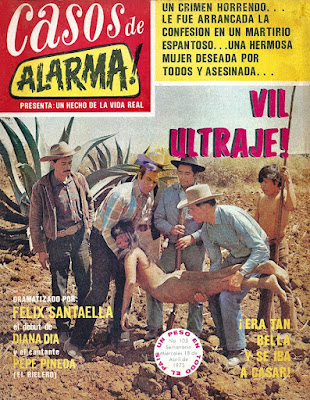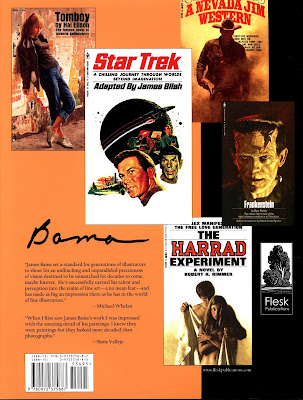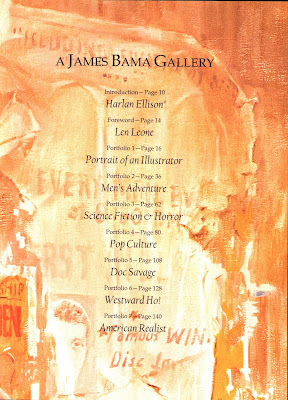Surf, Skate, and Rock Art of Jim Phillips
Schiffer, 2004
'Surf, Skate, and Rock Art of Jim Phillips' (208 pp.) was published by Schiffer in 2004. Like another trade paperback from Schiffer that I own, 'It Must Be Art: Big O Poster Artists of the 1960s and 70s', 'Surf' is very well-made, with a thick cardboard stock cover, sewn binding, thick, sturdy pages, and high-res reproductions of the profiled artwork.
Jim Phillips was born on October 24, 1944, in San Jose and grew up in Santa Cruz, a block from the beach. This was the Santa Cruz of California myth and legend, where beaches were deserted five days a week, where '....you could go out at Pleasure Point and not see another surfer all day', in the words of Phillips's friend, and fellow Santa Cruz native, Rich Novak.
Phillips learned to surf on the longboards of the 1950s and failed to graduate high school due to the presence of the waves, beckoning to him on his daily commute to school. It was in high school that Phillips began to hone his skills as an artist, and while working as a 'glasser' in local surf shops in the early 60s, he began painting his friends' cars and submitting cartoons to surfing magazines.
In 1965 Phillips enrolled in the California College of Arts and Crafts in Oakland and became involved in the burgeoning rock concert scene in the Bay area, providing posters, and working as a technician for the light shows accompanying concerts. The decade saw Phillips embarking on a peripatetic lifestyle that introduced him to different people and places, including a meeting with Rick Griffin, the artist who most shared with Phillips the 'California' sensibility towards graphic art, in 1967.
In the Fall of 1969 Phillips resettled in Santa Cruz, where he remains to this day, and began a career in commercial art, starting with surfboards, and then segueing into skateboards for local company Santa Cruz Skateboards / NHS. By the late 70s, Phillips yearly was churning out hundreds of graphics for decks, stickers, logos, catalogs, and advertising for NHS, as well as commercial art for area businesses and publications. During the 1980s Phillips gained fame (but sadly, not fortune) while supplying iconic art and graphics for NHS, by then one of the top skateboard manufacturers in the world, all the while continuing to earn commissions for rock posters.
By the early 1990s, Phillips had become disenchanted with working for the skateboard industry and he retooled his portfolio, remaining a go-to artist for posters, but also expanding into digitally produced art for print media, and art for tee shirts.
One thing that emerges from the pages of 'Surf, Skate, and Rock Art' is that Phillips, had he so desired, could've been a major player in the comix scene unfolding during the late 60s and on into the 90s. He certainly had the artistic ability, which, when paired with his affection for the drawing styles of the 1950s, allowed him to do some interesting things those few times he did turn his attention to that genre of sequential art:
On into the 2000s, Phillips concentrated more on studio art and the collector's market, while his reputation as an innovative artist whose graphics helped define the modern skateboarding era continued to grow.
Now retired and dedicated to painting studio pieces, Phillips is a Santa Cruz / Northern California institution and his legacy is perpetuated by his son, Jimbo Phillips, and grandson, Colby Phillips. Growing up in upstate New York, and being a bit too old to experience the whole skateboard culture when it emerged in the mid-1970s, I found quite a supply of goodness unknown to me in the pages of 'Surf, Skate, and Rock Art'.
Many of the deck, advertisement, and sticker graphics composed by Phillips and his team of younger artists will readily appeal to anyone who is a fan of commercial art with a 'lowbrow' sensibility.
And the rock show posters, done by Phillips for bands famous and not-so-famous, all showcase his ability to bring memorable imagery to a genre of commercial art that continues to gain greater recognition with the passage of time.
For those who like to reminisce about the California that used to be, the legendary California of the pop culture of the 60s, 70s and 80s, the art displayed in the book will inject a powerful dose of nostalgia. Summing up, anyone with a fondness for graphic art will find 'Surf, Skate, and Rock Art of Jim Phillips' well worth looking into, especially given its very affordable pricing at amazon.






































































